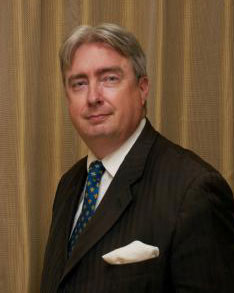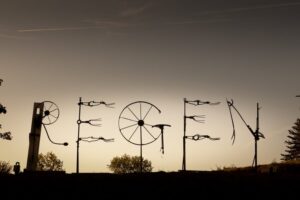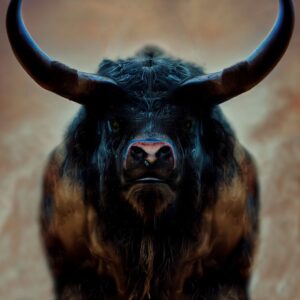
Charles A. Coulombe‘s essay is on the concept of ‘Deep England’ or ‘Merrie England’. Although he limits himself to the lands that he knows, England and the Celtic territories of the United Kingdom, his remarks could apply equally to and resonate with what we might call ‘Deep Jersey’: ‘The Jersey Way’, childhood memories of playing on the beach and tourists’ charabanc excursions, small mixed farms, apple orchards and cider making, ‘Black Butter evenings’, parish cattle shows, country lanes…. What is ‘Deep England’? What, indeed, could be ‘Deep Jersey’? (Or should that be la Jèrri profonde?) Readers’ comments welcome – Ed.
The recent coronation of King Charles III aroused enormous interest, not only in Britain, the Commonwealth, and the rest of the Anglosphere, but across Europe. In the last-named, it was as much because every nation on the Continent once was witness to similar accession rites; memories that the political, academic, and media industries in those countries would wish entirely forgotten were stirred.
Once upon a time, the coronation of the English King was typical of what European Monarchs promised their people; the oaths they received in return were also common and the anointing with sacred oil at once linked them all in time and space to each other, to Samuel’s anointing of King David, and to the Kingship of David’s heir, Jesus Christ.
But for those whose cultural and/or genetic roots are lodged in the British Isles, there was an additional fillip. The coronation is the apogee of the network of interlocked rituals and practices that remain from Old England. Whether we speak of well dressings or Morris dances, Jack-in-the Green or Mummers’ Plays, the Trial of the Pyx or Foxhunting, or anything concerning Robin Hood or King Arthur (despite the latter being ethnically closer to the Welsh, Cornish, and Bretons), we enter into what Sociologists to-day are pleased to call ‘Deep’ – and others ‘Merrie’ – England.
All these things tend to bring the beholder into a sort of communion with a better, greener land, upon whose hills the Holy Lamb of God may have been seen, and to which country many have vowed themselves.
But are these things echoes of a real past, mere evocations of a psychological mood, or bits and pieces of something truer and deeper – eternal, if not entirely incarnate either in the here and now or the way back when? Many an authority has weighed in on this very issue. Certainly, there is much truth in what Orson Welles opined, when speaking about Falstaff: ‘I think there has always been an England, an older England, which was sweeter, purer, where the hay smelled better and the weather was always springtime and the daffodils blew in the gentle, warm breezes. You feel a nostalgia for it in Chaucer, and you feel it all through Shakespeare. And I think that he was profoundly against the modern age, as I am. I am against my modern age; he was against his.’
There is certainly some truth to this notion – that all these things refer to a nostalgia for an England that never was – in a sense, that this hiraeth, to use a Welsh word, is for a magical homeland no more attainable on this Earth then the end of a rainbow – only to be realised in Heaven, if at all.
Yet, there is another side to it. In That Hideous Strength, C.S. Lewis sees English history as a struggle between her good and evil sides – Logres and Britain. His view of the battle is enunciated by the character Dr. Dimble: ‘Don’t you feel it? The very quality of England. If we’ve got an ass’s head it is by walking in a fairy wood. We’ve heard something better than we can do, but can’t quite forget it . . . can’t you see it in everything English–a kind of awkward grace, a humble, humorous incompleteness? How right Sam Weller was when he called Mr. Pickwick an angel in gaiters! Everything here is either better or worse than…’
At this point, he is interrupted, and reminded that the same struggle goes on in all countries. But we are left with the sneaking suspicion that the Lord Mayor’s Show represents all that is best in the old capital, even as taxes on automobiles reflect the worst.
But does Merry England – and for that matter, the lands of the ‘Celtic Twilight’ with whom England shares the British Isles, have more reality in the here and now than either an aesthetic mood or a psychological haunting? One cannot help but think so, when reading alternatives to the dominant Whig narrative of British history:
‘Subsequently, it was to be “those who supported the Divine Right of Kings” who “upheld the historicity of Arthur;” whereas those who did not turned instead “to the laws and customs of the Anglo-Saxons.” Arthur remained a figure central to Stuart propaganda. Stuart iconography celebrated the habits and beliefs of the ancient Britons. In particular, the Royal Oak, still a central symbol of the dynasty, was closely related to ideas about Celtic fertility ritual, and the King’s power as an agent of renewal: “The oak, the largest and strongest tree in the North, was venerated by the Celts as a symbol of the supreme power.” It was thus fitting that an oak should protect Charles II from the Cromwellian troops who wished to strip the sacred new Arthur of his status. The story confirmed the King’s mystical authority, and also his close friendship with nature. Long after 1688, the Stuart dynasty was to be closely linked with images of fertility. In literature, Arthurian images of the Stuarts persisted into the 19th Century. This “Welsh messiah, the warrior who will come to overthrow the Saxons and Normans,” was an icon of the Stuarts’ claim to be Kings of all Britain, both “Political Hero” and “National Messiah,” in Arthurian mould. Arthur’s status as a legendary huntsman (the figure of the Wild Huntsman is sometimes identified with Arthur) was also significant. The Stuarts made much of hunting: it helped to confirm their heroic status as stewards of nature and the land. In doing this, they identified themselves not only with Arthur, but with Fionn, the legendary Gaelic warlord who was in the 18th Century to be the subject of James Macpherson’s pro-Stuart Ossian poems. Fionn, legends of whom abound in Scotland, was also, like Arthur, scheduled to wake and deliver the nation when danger threatened. In identifying with both figures, the Stuarts were able to simultaneously present themselves as Gaelic and British monarchs. This symbolism was used with peculiar adroitness in Ireland, where the Stuarts were almost never identified with Arthur, but rather with Fionn and heroes from Fionn’s own time. Charles Edward was compared to Fergus, Conall, Conroy, and Angus Oge, while his grandfather became for some a symbol of Ireland herself, a Fenian hero in the making, a foreshadower of the sacrificial politics of such as Pearse: “Righ Shemus, King James, represented the faith of Erin, and so became her comrade in martyrdom.” In famous 18th Century songs like “the Blackbird,” Ireland was presented as an abandoned woman, waiting for the return of her hero-King. The same symbolism was used in Scotland. “The Gaelic messianic tradition” of Fionn suggested that the Stuart King would one day return to bring light and fecundity to the land. In the Highlands of Scotland, the events of Jacobitism themselves passed into folklore, like the older stories to which they were related. More educated Jacobite sympathisers compared the Stuarts to the heroes of the Roman Republic, to Aeneas, or to the saints. But the view of them as sacred monarchs of folkloric tradition and power was one which endured among all ranks’ (Murray G.H. Pittock, The Invention of Scotland, pp. 4-5).
Father Christmas himself owed his origin to a personification of all the old Christmas customs that the Puritans had outlawed and was seen as an ally by the Cavaliers in their ongoing struggle with Cromwell. Although he died in 1635 before the outbreak of the Wars of the Three Kingdoms, Bishop Richard Corbet made the assertion in his famous poem, Farewell Rewards and Fairies: ‘By which we know the Fairies Were of the old Profession. Their songs were “Ave Marys”’ Their dances were Procession.’
In The Rise and Fall of Merry England: The Ritual Year 1400-1700, Ronald Hutton makes the assertion that sundry folklorists have correctly seen the surviving customs we associate with Deep England as remnants of ‘The Old Religion’ – but they have been mistaken in seeing that Old Religion as paganism; rather, they are survivals of pre-Reformation Catholicism. As Eamon Duffy has shown in The Stripping of the Altars and Storm Jameson in The Decline of Merry England, and Kevin Phillips in The Cousins’ Wars, there was a definite break in the 16th and 17th Centuries between the millennium-old England, Scotland, Ireland, Wales, etc., that had been, and what has come down to us since then.
This is not to say that it was wondrous Eden. Miss Jameson puts it very well: ‘I do not pretend that England before the Puritan revolution was enjoying a kind of Golden Age, nor do I defend the many abuses of power and prerogative in those days. My object has been to show that during the second half of the 16th and the first half of the 17th Centuries, the government of England had always before it an ideal, which however badly it may have been fulfilled, was at least truer and nobler than that which superseded it with the advent of the middle classes as a result of the Civil War. To the Puritan ideal many of the ills of modern society are to be directly traced.’
Indeed, it is here we see the convergence of the two strands. Merry England – and her sister countries, have indeed always been more of an ideal than an accomplished fact. Chaucer mourned the good old days as much as Shakespeare – or for that matter Lewis, Williams and Tolkien – ever did. In that sense, ‘Merry England’ remains forever beyond our reach, save as a foretaste of Heaven, whether it be at the Coronation, on pilgrimage to Walsingham or Glastonbury, or watching the Morris men dance, accompanied by the town waits after the Court Leet finishes. But it was an ideal shared by English Kings before the Protestant Revolt, and by the Cavaliers and Jacobites afterwards; Culloden sealed its removal from the thought of the rulership of the British Isles – for all that George III yearned for the same dream. But it still haunted the ruled, if not the rulers. So it was that Young England arose, the Pre-Raphaelite Brotherhood, the Oxford Movement, Arts and Crafts, and the Neo Jacobite Revival of the late 19th Century. From the same fecund source came such diverse manifestations as the earlier pre-Marxist expressions of Celtic nationalism, Guild Socialism, Distributism, Social Credit, and the Inklings. But as time has gone on, these outbursts of yearning have become ever further removed from the everyday world of media, politics, and academia – save as objects of scorn.
And yet… and yet… the heaped-up scorn of those who dominate discourse perhaps betrays a primal sense of dread that ‘Deep England’ might not yet be dead. Certainly, the excitement around the Coronation, as well as that a few years ago with the return of Richard III shows that there is some life to the dream still. Whether it be the Association of British Counties, the lingering Jacobite and Ricardian Societies, the Scots and Irish clan Societies, or the innumerable national and local groups dedicated to preserving one thing or another, many still dream the dream once shared by King and Commoner, Priest and Peasant. If our betters in Whitehall, Westminster, Oxbridge, and the BBC still fear it sufficiently to beat the dead horse they incessantly claim it to be, then, like Sir John Barleycorn, it may well revive.
Of course, this division is not confined to the Three Kingdoms. There is La France Profonde, L’Italia Profondo, La España Profunda, Die Richtige Heimat, and so on through every country in Europe. Indeed, every European land is divided to-day between the pays reel – the ‘real country,’ and the pays legal – the ‘legal country’. Each of them is haunted by something better than what they are to-day. But as Dr Dimble further observed: ‘When Logres really dominates Britain, when the goddess Reason, the divine clearness, is really enthroned in France, when the order of Heaven is really followed in China–why, then it will be spring.’
If we strive for it, we may not achieve it in this life; but we shall certainly improve things – and perhaps merit it in the next.
Charles A. Coulombe divides his time between Austria and Los Angeles. Born in New York on the day of Kennedy’s election, he has written 12 books and numerous articles on a wide variety of topics, and is a sought-after lecturer at universities and after dinner functions alike. He is on the Board of the Canadian Royal Heritage Trust.
Of Norman descent (Le Neubourg) via Canada, he has always had a fascination with the Channel Isles as the last fragment of his ancestral Duchy that escaped the horrors of 1789.




